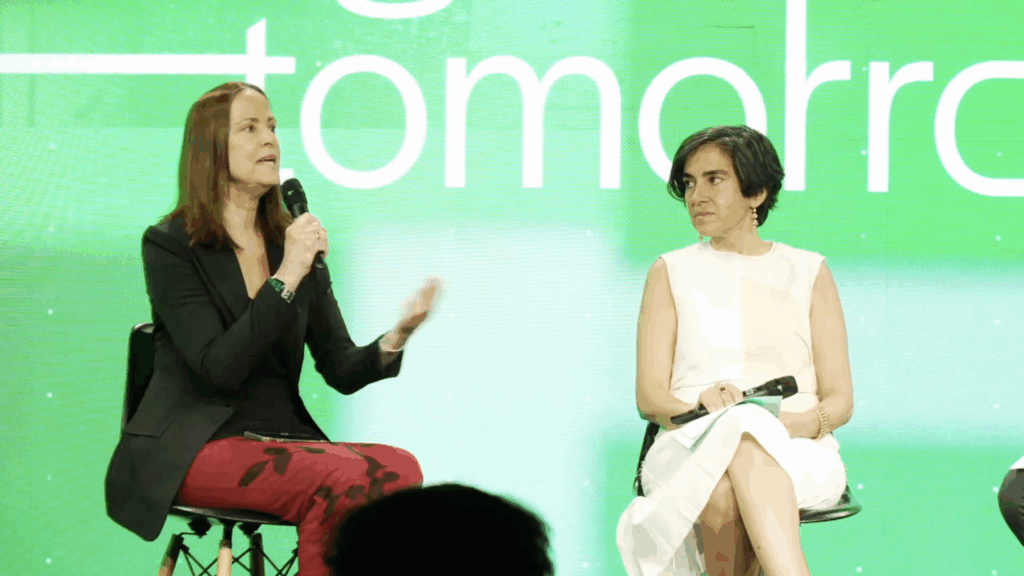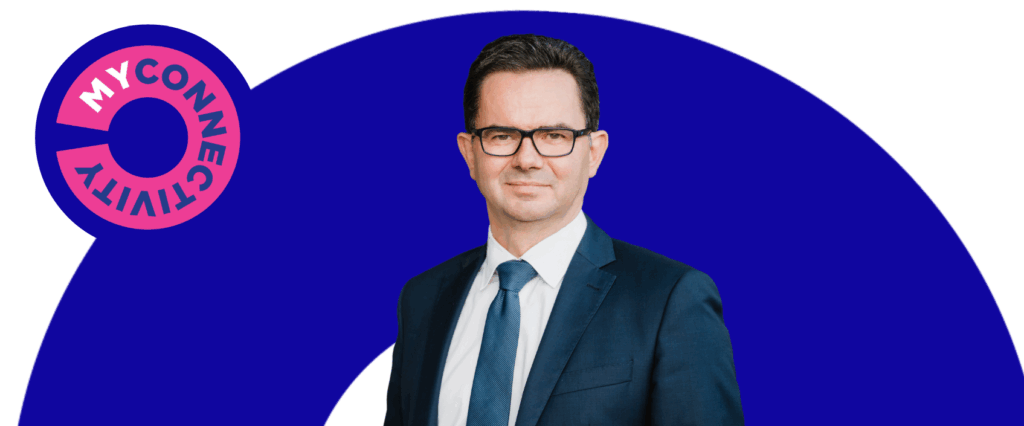
Summer series: The six dimensions of connectivity (Part six)
Scroll
Connectivity is a topic that could have us talking for an entire afternoon – and provides plenty of food for thought for an exciting summer split into in several chapters. `At this year’s Nexus 2050 in June, MyConnectivity hosted the (afternoon) side event ‘Connecting Tomorrow’. Sixteen experts spoke for four hours on the six dimensions of connectivity. This provided some enlightening insights, which we have summarised per dimension over the summer weeks. This week, as our final dimension: Impact.
Scroll
Part Six: The impact dimension
When we talk about connectivity, we are also talking about the human-machine interface – and thus about the (ethical) questions: How can we deliver powerful new technologies for people? And on the flip side: Where are people particularly in (creative) demand in the further development of technologies?
Combine, converge, compound: Added value innovation for people
Amy Peck, Founder & CEO of the New York-based strategy & consulting firm EndeavorXR, summed up the current 10 Strategic Technology Trends which are also relevant in this context. In addition to hardware and hard facts, these include topics such as energy-efficient computing, disinformation security, ambient invisible intelligence, and neurological enhancement – and hence aspects that focus on people. This is also reflected in the “3C Framework” (combine, converge, compound), which illustrates the added value that concerted technological innovation creates for people and organisations. Areas where this is already happening on a massive scale include artificial intelligence, engineering biology, spatial intelligence, robotics, and next-gen energy: As in many other industries, a momentous change is taking place here around the globe.
AI literacy and Art: Human inspiration for technological progress
Fedra Fateh, CEO of AI Art Lab, also based in New York, emphasised the influence that art – and thus human creativity – can have on future-oriented technology. To this end, it is necessary to promote AI literacy amongst people without STEM degrees in order to counterbalance purely business-oriented AI solutions. Such targeted public education would enable an AI-based dialogue in which art is a central form of expression. It is highly desirable that this also flows into professional solutions, as it preserves the human touch in business and technology. Furthermore, according to Fedra Fateh, this human approach, the connection between art and technology, amongst other things, constitutes a European strength – which is precisely why our continent with its rich cultural history and centuries-old creative industrial tradition should focus on it with regard to future-proof innovations.
For future oriented companies and social animals: humanity matters
In a fireside chat moderated by Jim Kent, Amy Peck and Fedra Fateh addressed the question of how AI could further develop in the coming years – and what role the human aspect will play in this. From Amy Peck’s point of view, it will be crucial that future oriented companies clearly define what they expect from AI in the long-term and ensure that their employees are onboard with appropriate sustainable development processes from the outset. Fedra Fateh even sees humanity at a kind of second Galileo moment, a profound change process which could take decades. In her opinion, the fact that humans are social animals, who need an exchange with other humans plays a role here. Against this backdrop, Amy Peck and Fadra Fateh came to the same fundamental answer to the question of what really matters in AI: Humanity.


